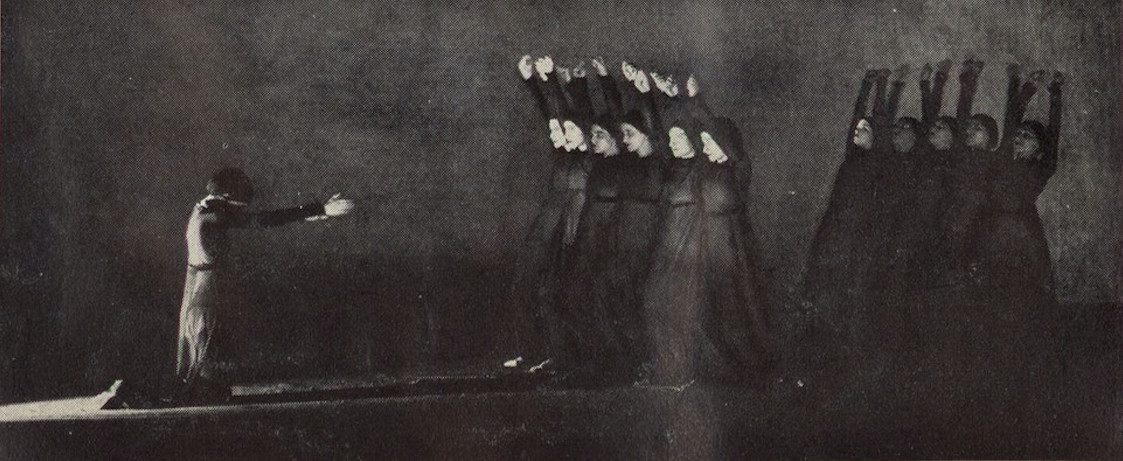The dancer and choreographer Martha Graham and her company toured twenty five countries as cultural ambassadors for the United States during the Cold War. But it was important to Graham, as high-profile as dancers get, that her audiences understood she was not a propagandist for her country. “My dances are not political,” she announced, as her company arrived in India in 1955.
Earlier this month, sixty-five years after Graham’s first diplomatic tour, a panel of historians and journalists met at Columbia University to discuss a new book that argued the opposite. “Martha Graham’s Cold War: the Dance of American Diplomacy” by Victoria Phillips, (Oxford University Press, 2019), came out this December.
Despite Graham’s disavowal, her lifelong refusal to be defined as a modernist, a feminist, or a member of any political movement, Phillips touts her book as the “first to frame [Graham’s] particular brand of dance modernism as pro-Western Cold War propaganda.”
I trained and performed with the Graham Center from 1995 to 1999. In her choreography, Graham often focused on classic myths or universal themes like love, religious worship or the ritual of daily work, to create a language of archetypes and symbols. In “Cave of the Heart” (1946) the Greek goddess Medea is “a study in jealousy and hate,” wrote Anna Kisselgoff, the widely respected chief dance critic of the New York Times. In Graham’s best-known work, “Appalachian Spring” (1944), she found another archetype—the boundless possibility of youth, as represented by a bride on the American frontier.
To Phillips, this was evidence that Graham was, despite her protestations, a propagandist for America. That she saw its myths as universal. But she also argued that Graham was a “fellow traveler”–a phrase that, in the forties and fifties, meant a person sympathetic to the Communist party. The only constant apparent in Phillips’ rendering of Graham was that she simply must have worked with political intent.
At the panel, a voice rose from the back row. It was Kisselgoff, the former Times critic, herself. “I have to say a few things,” she began. Kisselgoff invoked her decades of interviews with Graham to argue that she was that most baffling and controversial of things in modern America: beyond easy political definition.
“I would like to define her in the following way,” Kisselgoff said. “In 1923, Martha went to the Art Institute of Chicago, and she saw a painting by Kandinsky. She said, ‘I saw a splash of red against a field of blue. And I will dance like that.’ That is not political in the sectarian sense, and that’s who she was.”
It struck me, as a former dancer, now a journalist, that Kisselgoff and Phillips were outlining a key struggle the press has in 2020: journalists cannot understand that most people don’t care that much about politics and certainly don’t define themselves entirely by it.
A Politico piece last week wondered why 92 million eligible voters don’t cast ballots. In September, the New York Times traveled to swing states, only to report the constituents who live there are more concerned with how to make rent than they are with politics. Fifty-four percent of Americans “either hold a roughly equal mix of conservative and liberal positions or say they don’t follow the news most of the time,” the piece quotes from an Upshot analysis of 2017 data from Pew Research.
The Knight Foundation released the results of “The 100 Million Project,” last week too, which studied 12,000 chronic non-voters, many from swing states. Such studies tend to make archetypes of us all. “The average chronic nonvoter is a married, nonreligious white woman between 56 and 73 who works full time but makes less than $50,000 a year,” read Politico’s analysis.
But the piece also finds those who decide not to engage in politics are really a pretty eclectic bunch—some are wealthy, but more are poor. Most live in families and communities that don’t vote either. And most express feelings of alienation from American politics—they don’t believe that they can make a difference, or they don’t trust those who run the system, or they can’t stand the din of the press, or it’s all just too much work to understand.
Is it really so surprising that more than half of Americans agree with points on both sides of center? That constituents’ lives are too full of immediate, concrete problems for them to express political views online, to engage politically in person, and, often, to vote? Perhaps what we journalists–embattled, working in a dying industry–mean really when we fail to understand is, “Aren’t you angry?”
“Miss Graham,” Kisselgoff wrote once, “never works so much with specifics as she does with universals.” Maybe we should take her example.
Amanda Darrach is a contributor to CJR and a visiting scholar at the University of St Andrews School of International Relations. Follow her on Twitter @thedarrach.

